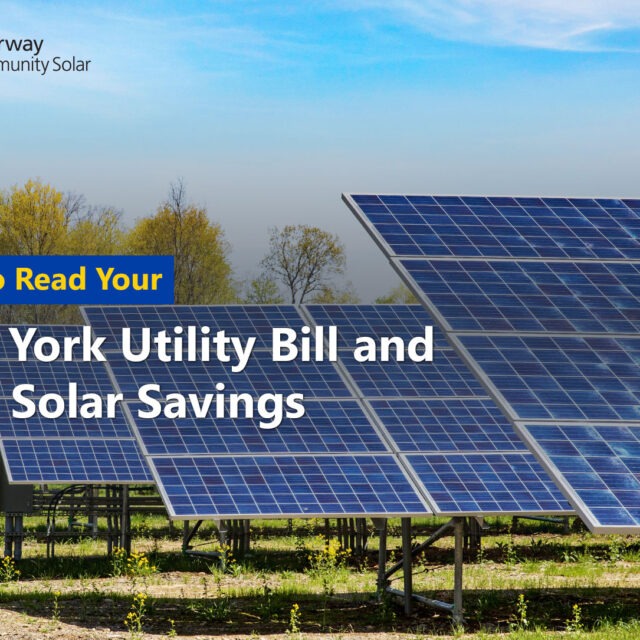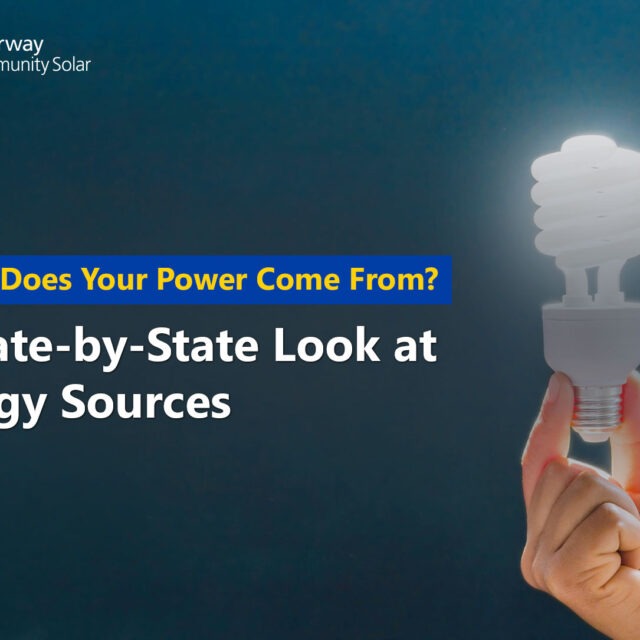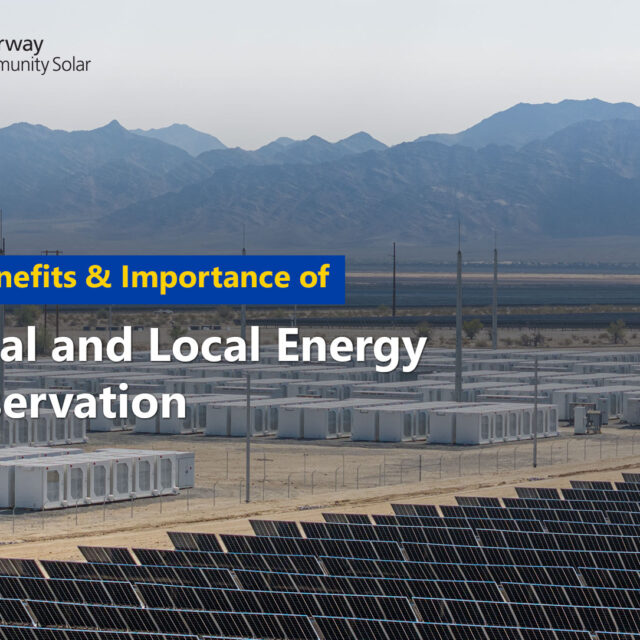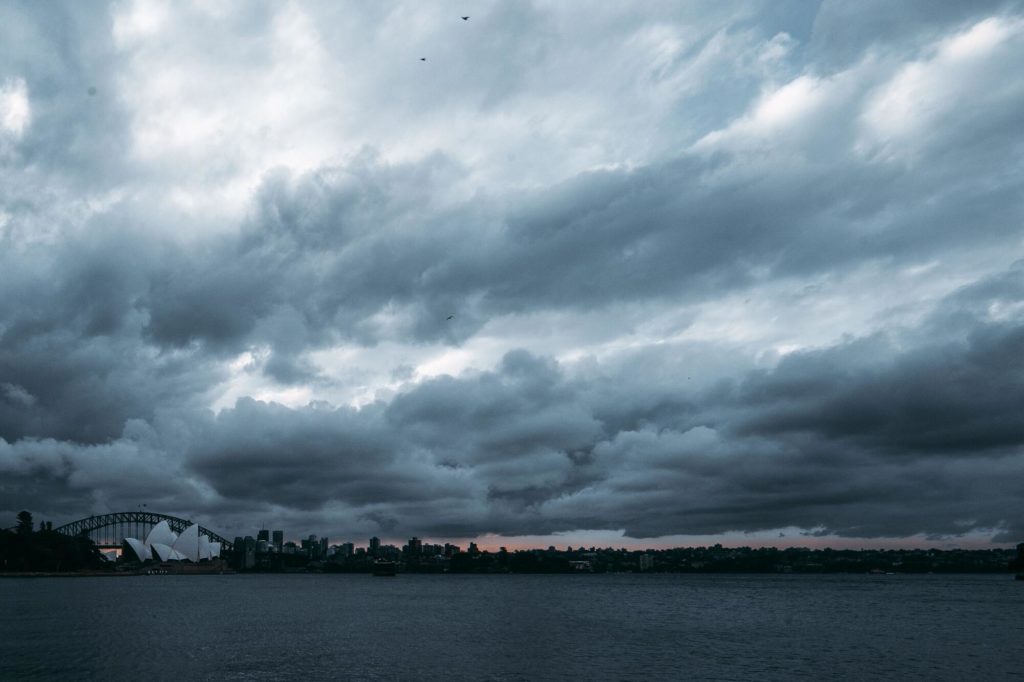
Parental Note: This experiment is geared towards ages 6 and up.
Additional Note: This experiment will take about 20 minutes to complete.
Experiment Overview:
Water can occur in three states–liquid, gas, and solid. Water vapor is the gaseous form of water, and this is what clouds are made of! Have you ever wondered why sometimes the sky is cloudy, but there’s no rain coming down, and sometimes the sky is cloudy, and it does rain? It all has to do with something called relative humidity, which is how much water is in the air compared to the temperature of the air. Warmer air can hold more water vapor than colder air.
Relative humidity goes down when the temperature of the air rises, but the amount of water in the air stays the same. Relative humidity goes up when the temperature of the air falls, and the amount of water in the air stays the same. If the air temperature goes past the temperature needed for the water vapor to condense back into a liquid, then the water vapor (clouds) will start to turn into liquid droplets of water and fall down to Earth as rain!
In this experiment, you’ll create your own colorful rain cloud in a cup using some household items.
Before beginning, think about the following question(s) and write down your predictions:
- What do you think will happen to the food coloring (rain drops) after you drop some into the shaving cream (clouds)?
Experiment Materials:
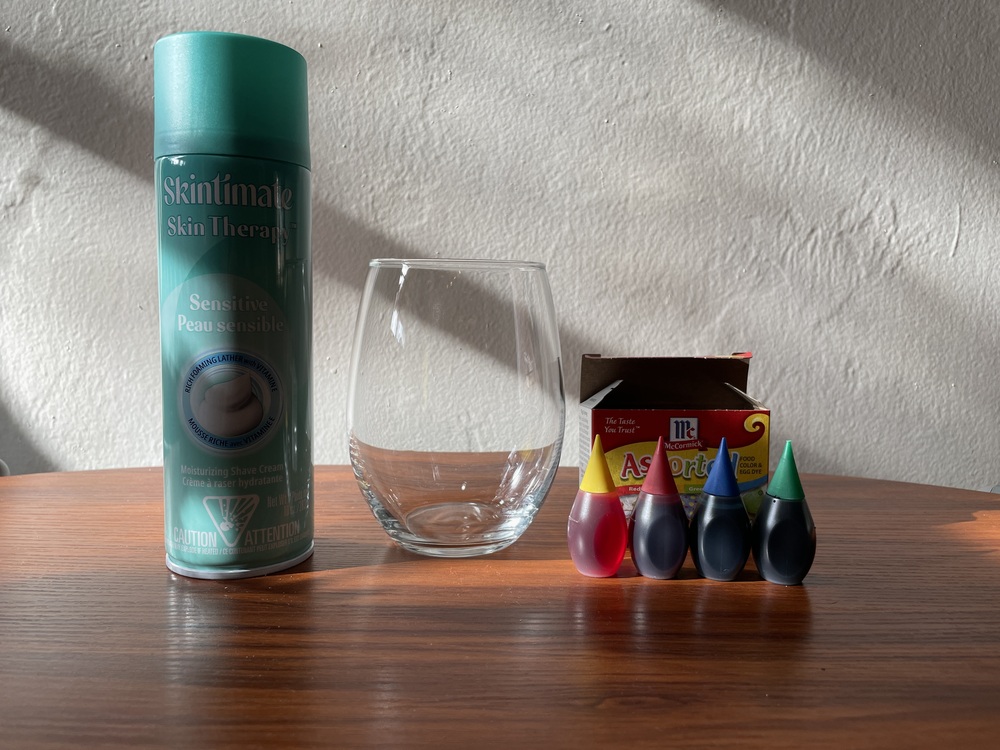
- Clear cup or glass
- Foamy shaving cream
- Food coloring
- Water
Experiment Process:
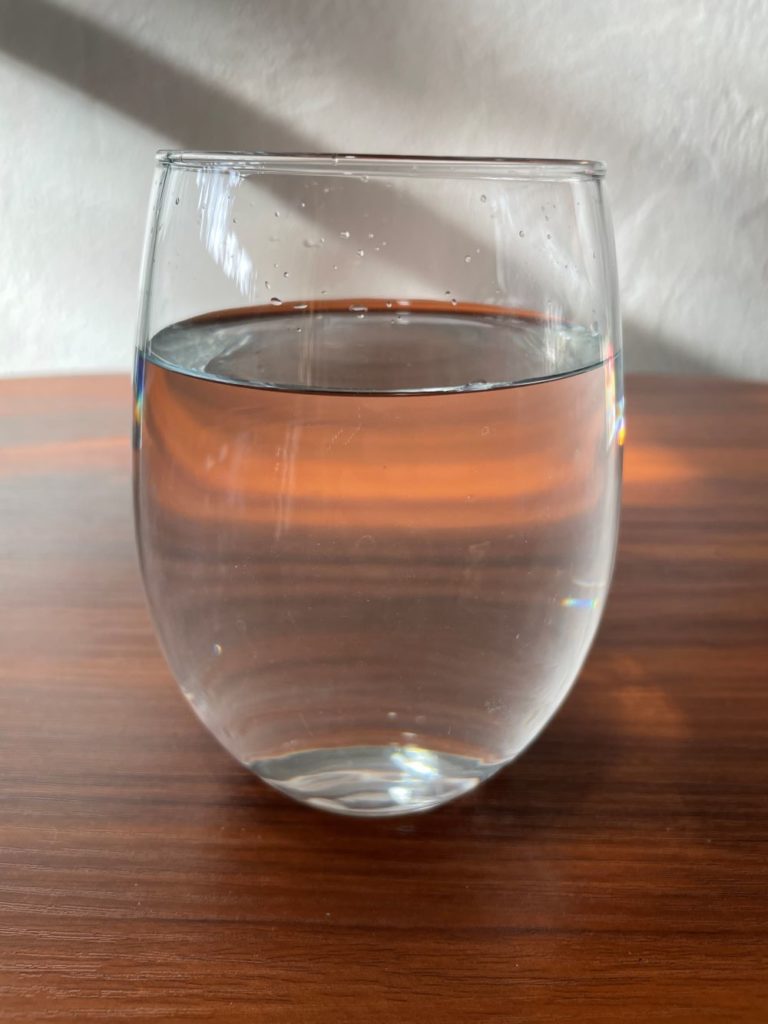
Step 1
Fill a clear cup with water.
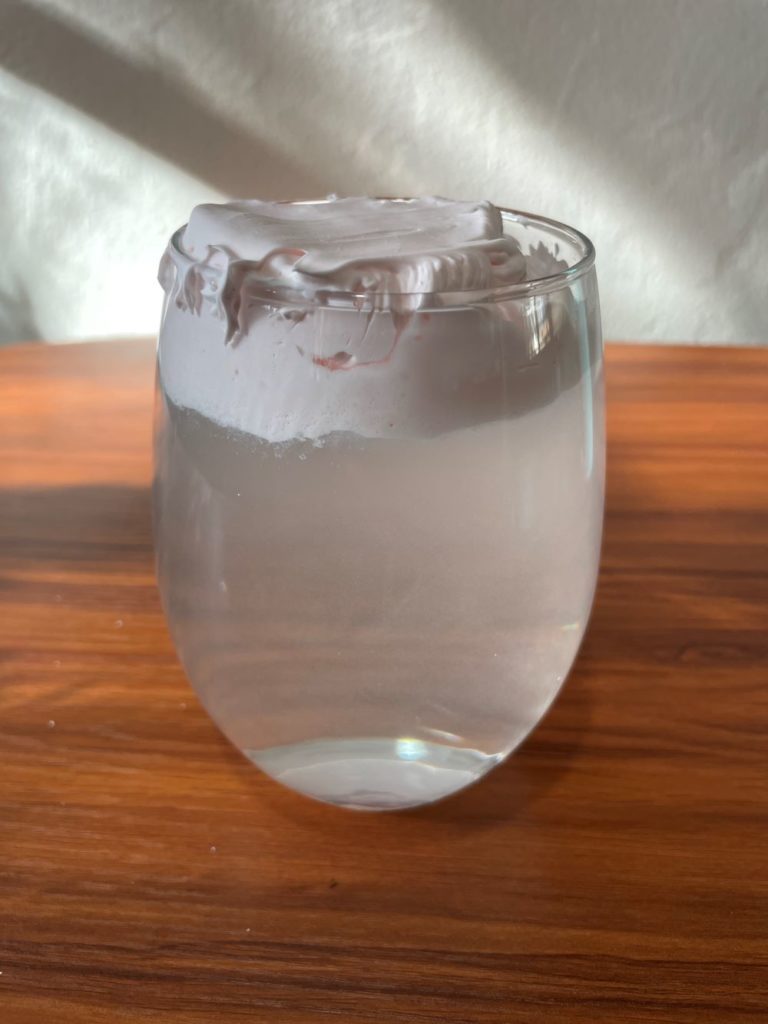
Step 2
Add a layer of shaving cream. Try not to make it so thick that the food dye can never get through.
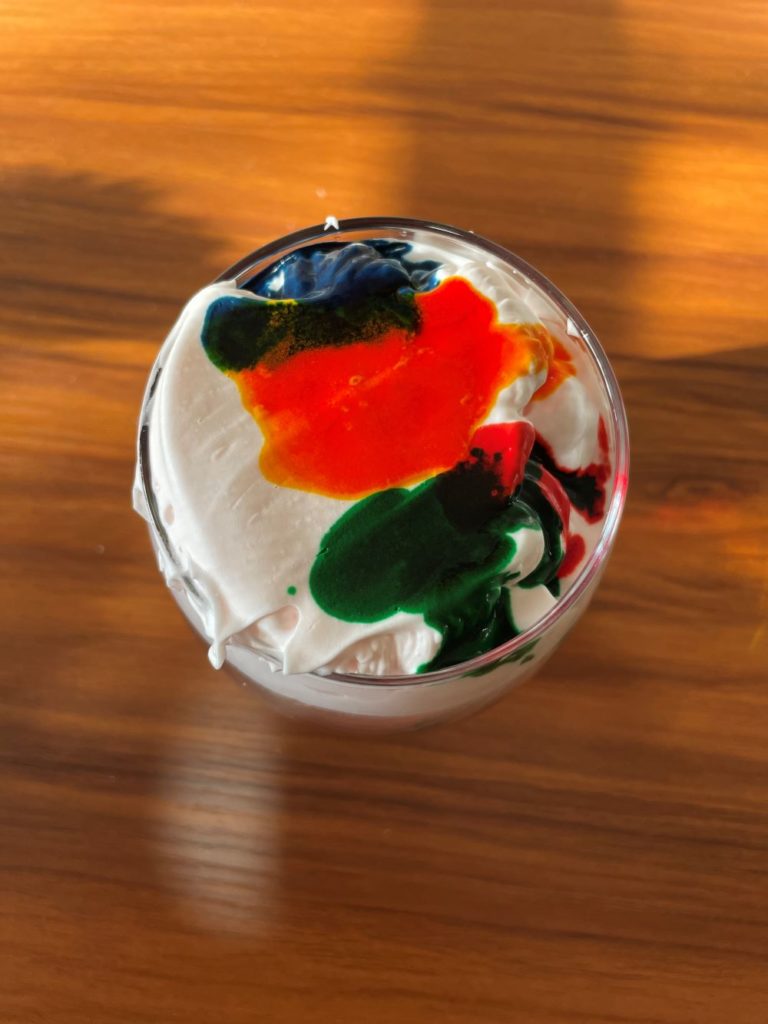
Step 3
Add several drops of food coloring. Feel free to use all different colors! If nothing happens, add more drops of food coloring until you notice a change.
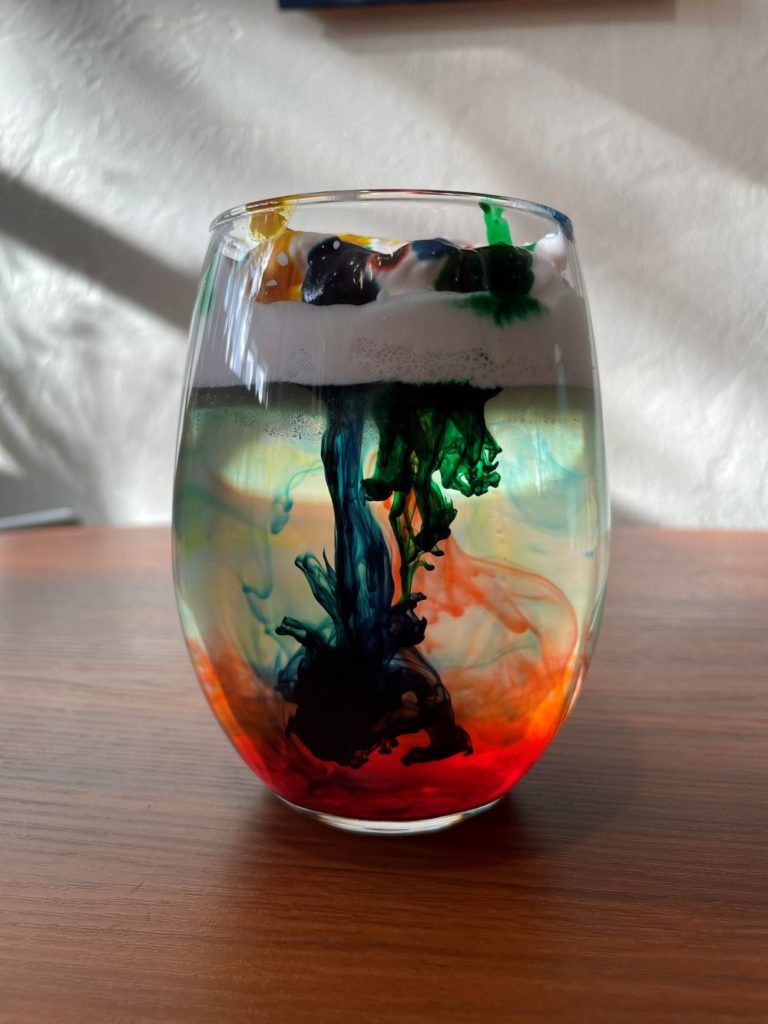
Step 4
Observe what happens next!
Share Your Results
- What happened to the food coloring (rain drops) when you dropped them into the shaving cream (clouds)?
- Why do you think this happened?
Conclusions:
When you made your own rain cloud, you should have noticed that eventually, all those droplets of food dye moved through the shaving cream and down into the cup. This is similar to how rain falls from clouds down to Earth!
So why don’t the water droplets just stay up in the clouds? Well, this has to do with differences in density, which is the amount of mass within a given volume. You may recall from the Ocean Currents Experiment that more dense water (molecules take up less volume) will sink, while less dense water (molecules spread out and take up more volume) will rise. Well, in the clouds this rule applies too. The water droplets are denser than the water vapor, causing them to sink through the clouds. Gravity then causes those droplets to fall down to Earth.
Extension:
You can learn more about water properties, the water cycle, weather, and climate with these fun at-home experiments:
- The Water Cycle: Make a Distillery
- Experiment With the Water Cycle
- Ice Melting Experiment
- Ocean Currents
Learn about water pollution and water as a renewable resource with these experiments:
